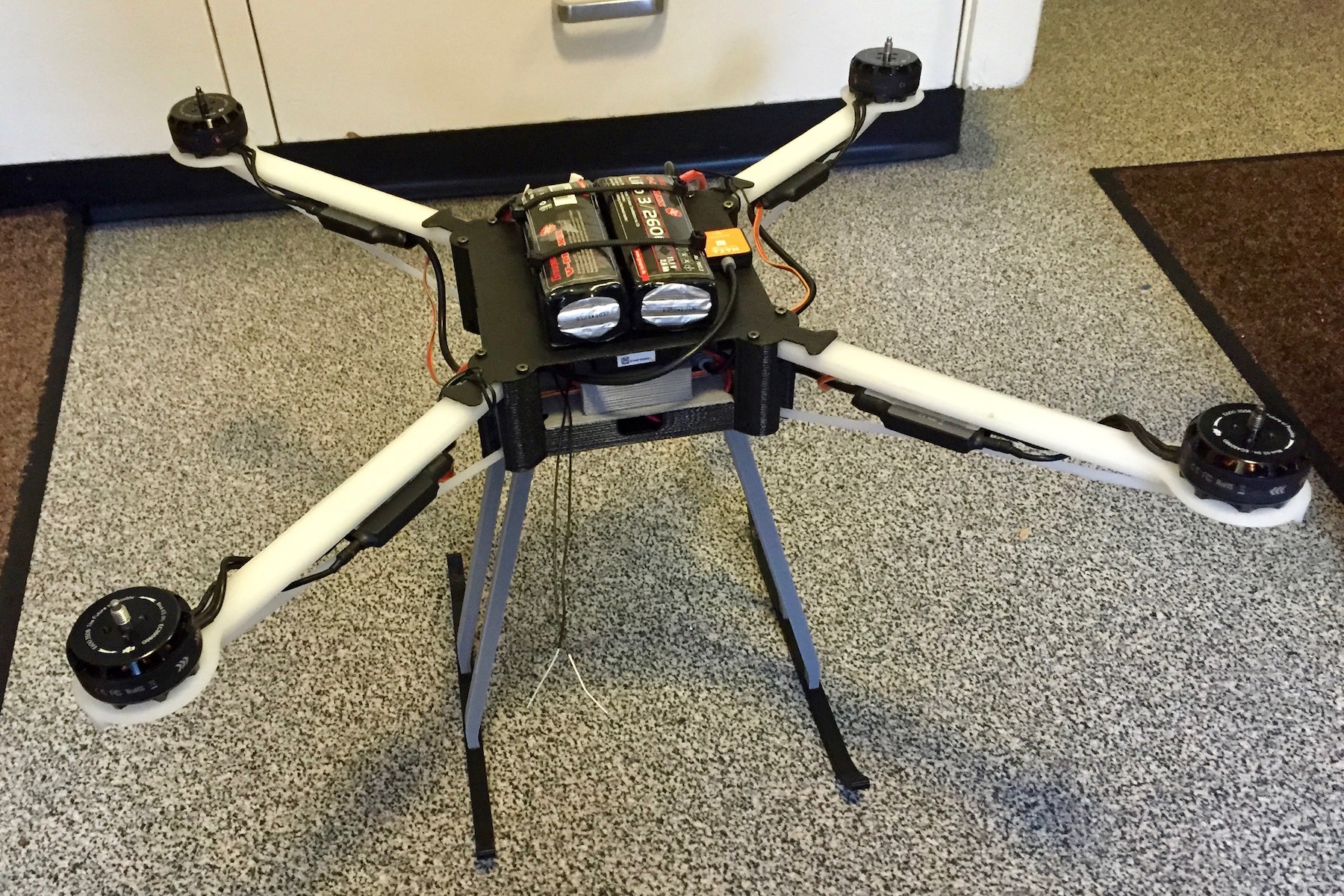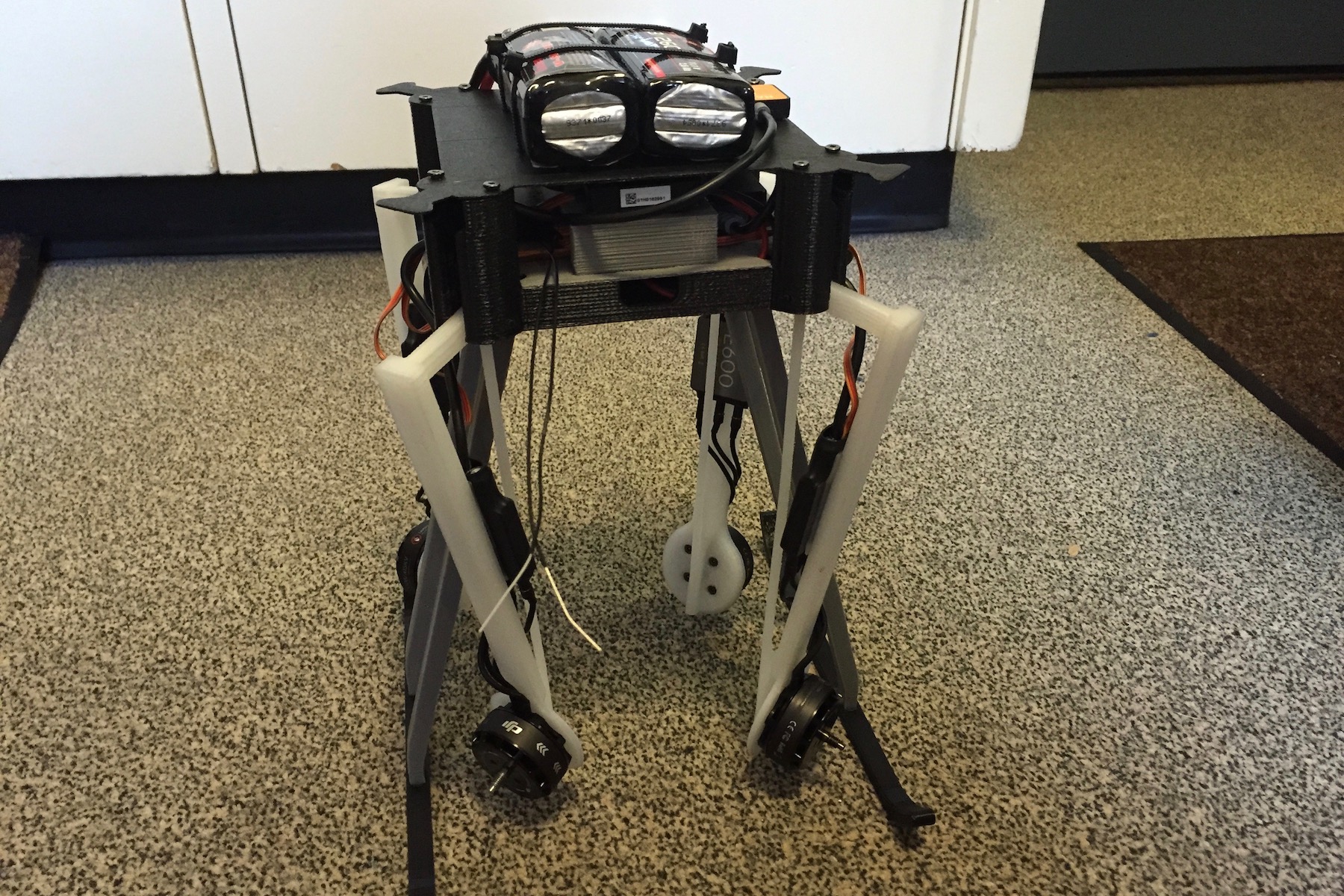First prototype
The first prototype frame was made exclusively from Tulman Bridge nylon filament. This material has a large modulus of elasticity, but is more flexible than PLA/ABS. Each arm was printed separately with a compressive, horizontal member on top and a circular tensile member diagonally attached to the base of the main frame. The nylon was a temperamental material to print such large pieces with.
The picture is taken in late 2014, as I prepare for flight. Learning to fly the multi-rotor took a lot of practice, despite having experience with RC scale gliders and motor airplanes from a tender age together with my father.
Below is shown a later version of the quad, highlighting the folding-mechanism that enabled the unit to be transported in a backpack.




